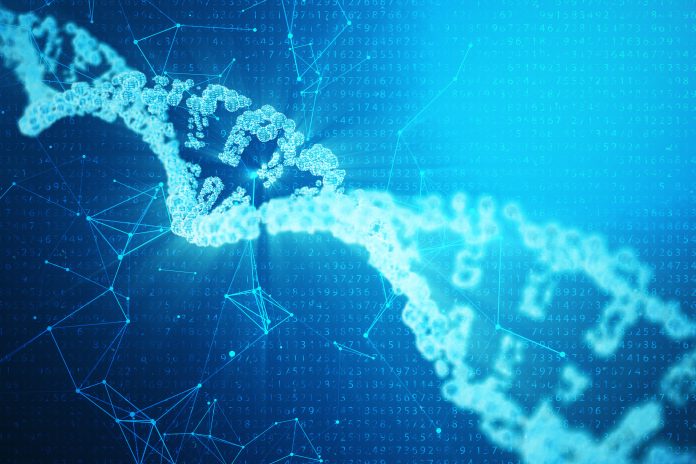Aarthi JanakiRaman, Research Director, Chemicals and Advanced Materials at TechVision, argues that glycoscience is one of the key enablers for the bioeconomy
The bioeconomy in Europe is expected to be a top priority for the next five years. The Horizon Europe plans place equal emphasis on environmental and human health along with ensuring carbon neutrality and sustainable/smart cities. Glycoscience, as an evolving concept, can help realise all these missions seamlessly. The evolving research field of glycans and carbohydrates have the potential to influence innovations and developments that can help achieve a circular bioeconomy.
Carbohydrates in the circular economy
Carbohydrates are an integral part of our daily life in various forms, be it in the form of cereals that forms a staple in our diets or cotton, hemp, jute, wood and other fibres that are the base of many clothing and other consumer products. Carbohydrates, be it cellulose, starch, pectin and myriad other forms are not restricted only as a food source, but also have a far-reaching impact in various industries. The role of glycans for health and nutrition is gaining focus. Research studies are gaining momentum to explore its potential in vaccine development, treating cancer, cardiovascular disease, boosting general health and immunity and many more. Recent studies on carbohydrate structures and their chemical and biochemical interactions have paved the way to explore the role of carbohydrates in driving sustainability and creating a circular bioeconomy. While its influence is far-reaching, based on various ongoing research efforts, some of the key industries that glycans and glycoscience can play a vital role in include the energy and chemical ones.
Glycans as an alternate energy source
Carbohydrates, mostly in the form of lignocellulose biomass, derived from various agricultural, forest and other wastes is one of the feedstocks being explored for the development of alternative fuels. Sugars are the building blocks of carbohydrates and these, as we know, form the bulk of plant cells. Biomass-based feedstock can be processed to manufacture high-value biofuels and intermediates that can be a potential replacement for petroleum-derived fuels. Several companies are trying to establish pilot and commercial- scale facilities to process lignocellulose feedstock to obtain fuels. Despite the ever-rising interest, the adoption of bio-derived fuels is still nascent, mainly due to concerns about continuous availability and price. The use of perennial lignocellulosic biomass as feedstock can address the first concern while various economic, technological and market-driven factors impact the price of these alternative fuels.
The role of glycoscience becomes of paramount importance to address various technology and processing challenges. Some of the key ones include:
- Studying the molecular and enzymatic pathways and carbohydrate structures can help in understanding the cell wall degradation mechanism and the processes needed for effective breakdown to increase the amount of sugars obtained.
- Designing molecular and enzymatic pathways to overcome the issues of cell wall inhibitors and increasing the efficiency of molecular breakdown.
- Optimising the effectiveness of enzymes and microbes in bioprocessing of feedstock.
- Fine-tuning the fermentation and conversion processes to increase the quality of fuels and thereby biofuel performance metrics.
- Increasing the cost efficiency of conversion and processing to achieve price parity with the commercial fuels to name a few.
- Achieving feedstock efficiency by ensuring that requisite seed traits are present in crops and maximising resource efficiency by optimising water and plant growth aids.
Glycans as chemical intermediates and biomaterials
The complex nature of carbohydrates or poly- saccharides makes it an interesting choice for manufacturing various bio-based chemicals and materials, especially polymers. The chemical industry’s role is imperative for a viable transition to the bioeconomy and considering the widespread role different materials play in our day-to-day activities, glycoscience can facilitate the development and commercialisation of various carbohydrate-based chemicals and materials for various end-use applications.
Carbohydrate based polymers have far-fetching applications, from packaging, consumer goods, FMCG products and even as reinforcements for other structural materials. Within the context of the chemical industry and bioeconomy, glycans and, in turn, glycoscience can help in the development and manufacture of chemical intermediates, fine and speciality chemicals, polymers and composites. The interdisciplinary nature of glycoscience can also help in the emergence of new industries and opportunity areas.
Advances in glycoscience can help in developing cost- effective materials and chemical intermediates that are on par with conventional counterparts in terms of cost, performance, efficiency and functionalities. It can also help in bridging the gap between various industries and create a realistic closed-loop system. For example, glycoscience can help in improving the feedstock availability for the synthesis of chemical intermediates and act as a bridge between the agriculture and chemical industries. Some of the other ways that glycoscience can help in the transition towards bioeconomy include:
- Designing molecular and enzymatic processes for the manufacture of biopolymers and chemical intermediates.
- Modify existing and create new reaction pathways to create polymeric materials with properties and functionalities that are in line with conventional polymers.
- Fine-tuning structural characteristics of carbohydrates and polysaccharides to develop specific performance characteristics.
- Developing environmentally–benign extraction and processing technologies to achieve product specificity, feedstock efficiency, integrating new material characteristics and functionalities such as self-assembly, nanoscale modifications, etc.
- Developing characterisation tools and techniques for effective isolation, processing and modification and commercialisation of biopolymers and chemicals.
Interdisciplinary research & sustained funding
To reap the maximum benefits of carbohydrates and glycans to facilitate seamless transitioning to a bioeconomy, there is a need for sustained research efforts. Ongoing research activities are in silos in specific technology and application areas. There is a need for collaborative research activities that can address the technical challenges of the lignocellulosic biomass conversion to valuable chemicals and fuels related to improving the efficiency of fermentation, hydrolysis, etc., flexible retrofittable processes that are feedstock agnostic and increasing product yields. R&D is also needed to integrate both downstream and upstream processes to facilitate process integration; the current technology developments focus either on chemical or biological and there is a need for an efficient interface to seamlessly transition between biological, chemical and biochemical processes.
Funding and investment are targeted for specific research projects rather than developing platform technologies and processes that are applicable for various feedstocks. Judicious allocation of funding spread across collaborative projects, development of enabling technologies such as analytical, simulation and modelling tools, sequencing tools and others can improve the efficiency of glycoscience research. Support from governmental funding and investment agencies to improve the accessibility of funding for SMEs for scale-up activities, establish pilot plants apart from R&D funding can go a long way to improve the role of glycans in the energy transition and bioeconomy.











